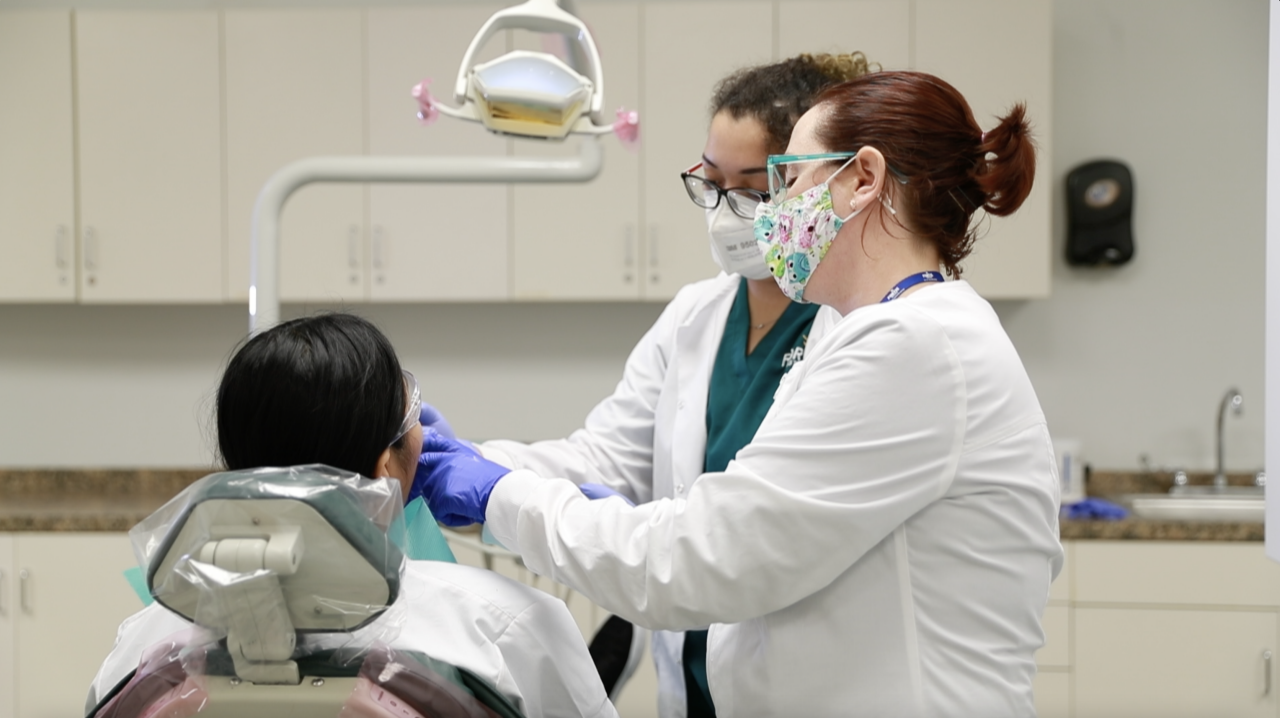Many people experience anxiety about going to the dentist, and that means part of the job of a dental hygienist is to put them at ease. Fortunately, the tools and technology of dentistry can help reduce patient anxiety because they’ve evolved over time. Here are some of the primary tools of the trade that hygienists use on the job.
Instrument Tools
Mouth mirror. This tool allows you to see into every corner of a patient’s mouth, both the interior side and outside of their teeth.
Sickle probe. This is a metal probe that comes with different shapes of hooks on the end of it. It can be used to scrape tarter and plaque and also analyze a patient’s tooth surface.
Scaler. This tool is used to remove plaque build-up in pockets between teeth and along the gum line. It’s probably what most patients dread. An ultrasonic scaler uses vibrational energy with a stream of water to scrape plaque and tarter build-up rather than manual scraping with a hand scaler. Sometimes you might use both during a cleaning.
Suction device. The “saliva ejector” is a hollow plastic tube that uses low-level suction to remove saliva during a cleaning. The dentist also uses a high-level suction device to suction out old fillings or tooth fragments during a dental procedure.
Polishing tool. This tool is used to polish teeth and remove stains after plaque and tarter have been scaled off with the scaler.
Technology
Digital X-rays. Some dentists still use traditional X-rays to look at a patient’s teeth for cavities, but many offices have moved to digital radiography (X-rays). The hygienist inserts a sensor into the patient’s mouth to capture images of their teeth. There’s no film involved, and images are available immediately on a viewing screen.
Laser cavity detector. The laser cavity detector is newer technology that uses a pen-shaped laser to scan teeth for density and the possible signs of decay. Traditionally, a dental explorer and X-rays are the tools dentistry uses to detect cavities, but a laser detector can reduce the likelihood of drilling if a cavity is detected in the early stages.
3-D imaging. If a patient needs a crown, bridge, or dental implant, no longer do they need to bite down on a gooey mold for an impression to create the replacement. The 3-D imaging offers the dentist improved precision for creating replacements.
Are you ready to help someone improve their smile? Fortis can help you get started by providing you with a quality education that can put you on the path to a rewarding career. Visit the Dental page on the Fortis website, or call (855) 436-7847 for more information or to schedule a tour at one of our campuses.

